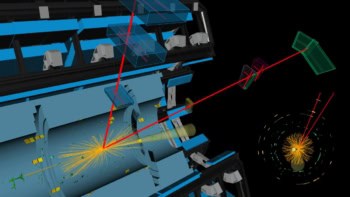The production of an element that has already been seen in three different laboratories would not normally be newsworthy. However, confirmation that element 110 can be made in collisions between lead and nickel nuclei is noteworthy given the recent scandal over element 118. Last year the Lawrence Berkeley National Laboratory in the US sacked physicist Victor Ninov after an internal review committee found that he had fabricated data purporting to show the existence of a new element containing 118 protons. Now an international team of nuclear physicists led by Ken Gregorich from Berkeley - and containing many of Ninov’s former co-workers - has provided the first confirmation of the discovery of element 110 at the GSI laboratory in Darmstadt, Germany (T Ginter et al. 2003 Phys. Rev. C 67 064609).
Element 110 – also known as Darmstadtium – was first discovered at GSI in 1994, and was quickly seen in other experiments at Berkeley and the JINR laboratory in Russia. However, none of the observations confirmed the others because they all produced different isotopes of the new element. In total seven different isotopes were created, with the lightest containing 157 neutrons and the heaviest having 171 neutrons.
In 1998, the GSI team produced an isotope of element 110 with a mass number of 271 – which is written as 271110 – by colliding lead-208 and nickel-64 nuclei. Now, Gregorich and colleagues have repeated this reaction at Berkeley using the lab’s 88-inch cyclotron facility. The Berkeley team accelerated a beam of nickel-64 nuclei to an energy of 309 MeV and directed it at a lead-208 target. The team observed two chains of events which signalled the production and decay of 271110. Gregorich and colleagues compared these alpha-decay sequences with those reported by the GSI team and found a “striking agreement”.
The Berkeley committee that investigated the element 118 affair was critical of the fact that no-one in the experiment, apart from Ninov, had traced the three events purporting to show the production of element 118 all the way back to the raw-data tapes. The latest element 110 paper points out that “the raw data containing each of the two decay chains have been subjected to close scrutiny to ensure that these events are not the result of the same process leading to the incorrect report of element 118”. Although Ninov is not one of the co-authors, he is acknowledged for his participation in the work.



